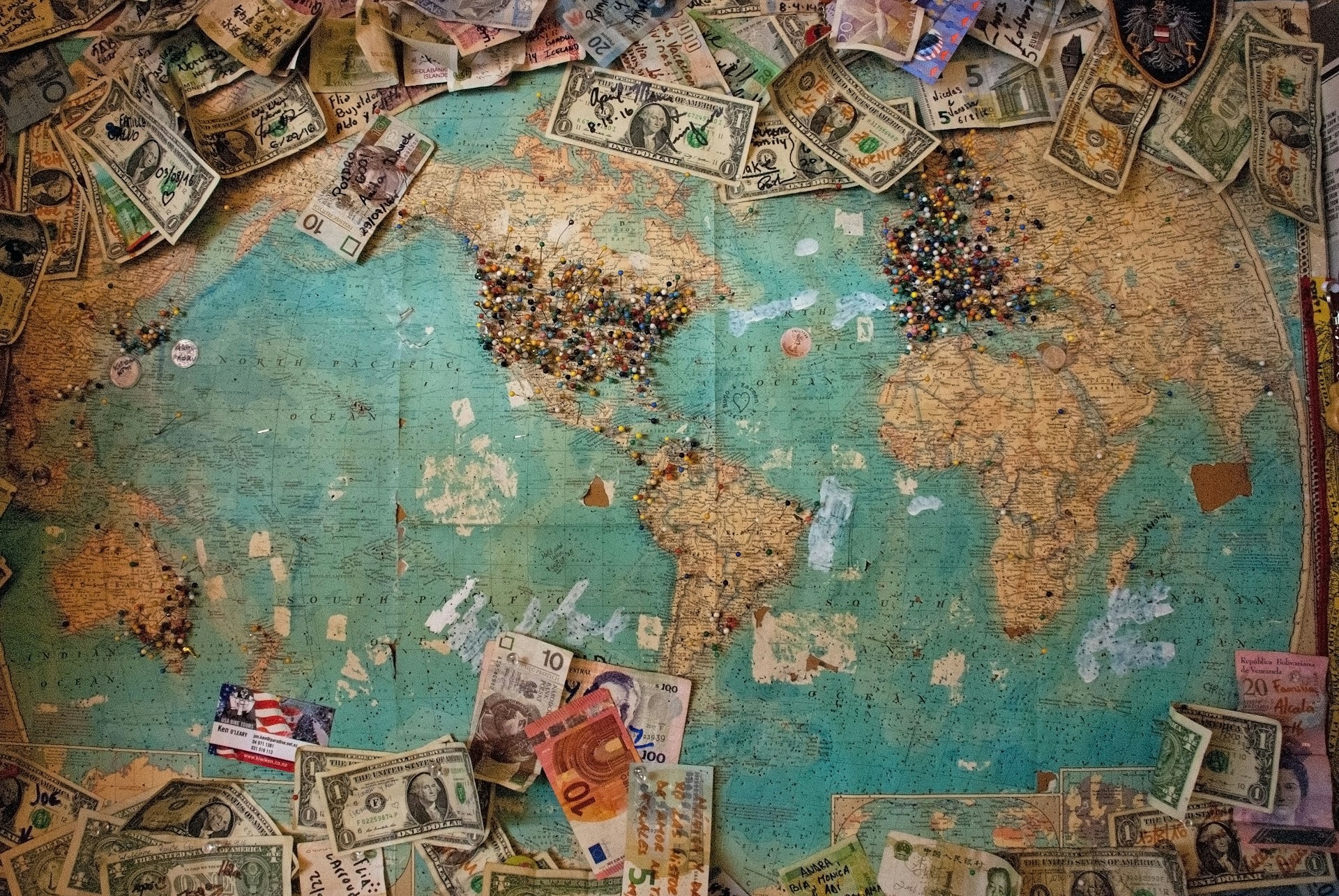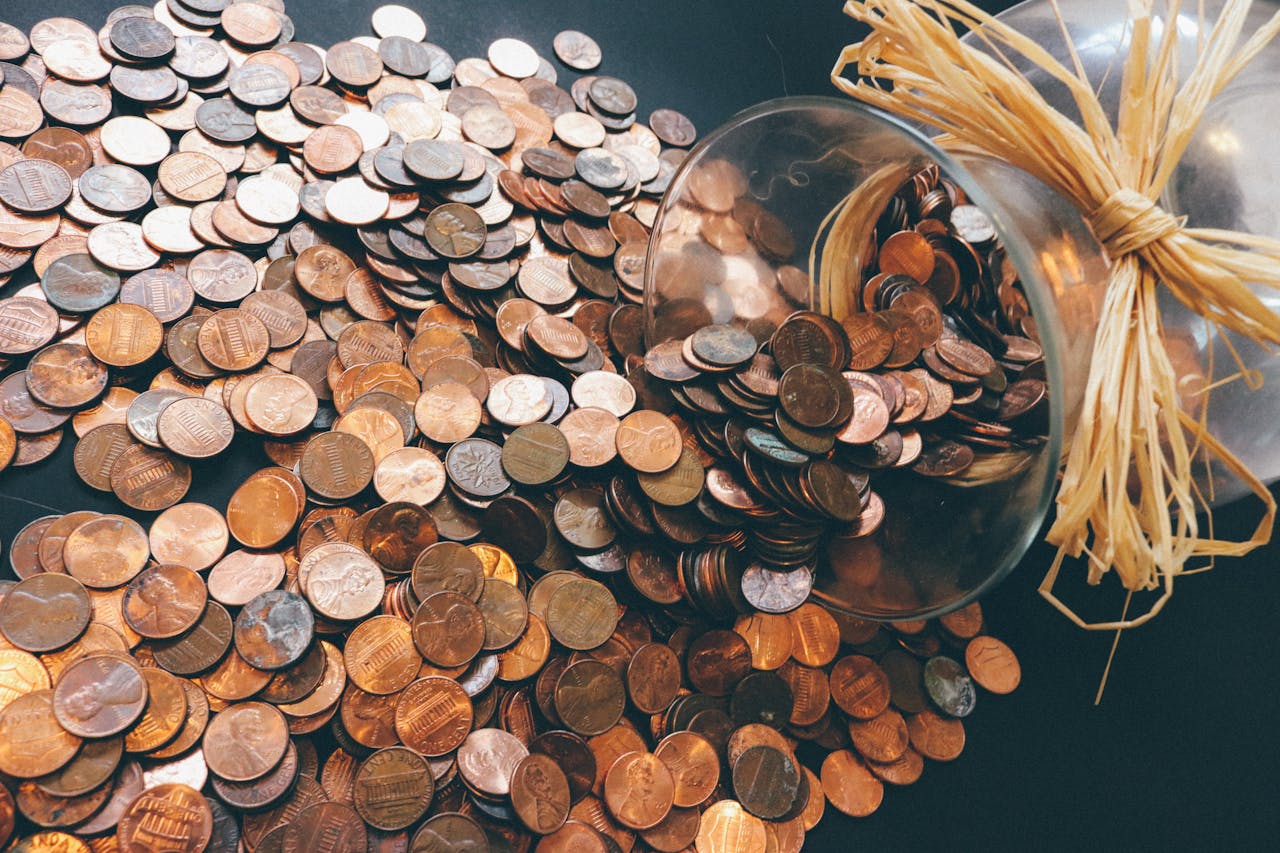What Are Some Interesting Money Facts?
Welcome to a fascinating journey through the world of finance and wealth! In these interesting money facts, we'll uncover intriguing stories and surprising facts about currency, commerce, and the countless ways money shapes our lives.
Author:Dr. Felix ChaosphereReviewer:Xander OddityFeb 20, 2024162 Shares32.4K Views

Welcome to a fascinating journey through the world of finance and wealth! In these interesting money facts, we'll uncover intriguing stories and surprising facts about currency, commerce, and the countless ways money shapes our lives. Join us as we delve into the captivating realm of money and uncover the extraordinary tales hidden within its folds.
Historical Perspectives Of Money
Throughout history, money has taken on various forms and played a central role in human societies. The concept of currency dates back to ancient civilizations, where goods such as grain, livestock, and precious metals were used as mediums of exchange. In ancient Mesopotamia, for example, people traded goods through a system of bartering before the emergence of standardized forms of currency.
One of the earliest forms of money was commodity money, where goods with intrinsic value served as a medium of exchange. This included items like shells, salt, and even cocoa beans, which were widely used in different parts of the world. The adoption of commodity money helped facilitate trade and economic transactions across regions.
As societies became more complex, the need for a more efficient and standardized form of currency arose. This led to the development of metallic coins, such as gold and silver, by civilizations like the Greeks, Romans, and Chinese. These coins were stamped with official marks to guarantee their weight and purity, ensuring trust and facilitating trade over larger distances.
The use of paper money, in the form of promissory notes and banknotes, emerged during the Middle Ages in China and later spread to other parts of the world. Paper money was initially backed by precious metals stored in banks, but over time, governments began issuing fiat currency, which derived its value from the trust and confidence of the people rather than its intrinsic worth.
The evolution of money reflects the changing needs and complexities of human societies. From the bartering of goods to the use of digital currencies like Bitcoin, the history of money is a testament to the ingenuity and adaptability of human civilization in facilitating economic exchange and progress.
Psychological Insights On Money
Money is not only a practical tool for economic transactions but also a subject deeply intertwined with human psychology. Understanding the psychological insights behind money can shed light on various behaviors and attitudes towards wealth, spending, and financial decision-making.
One of the key psychological aspects of money is its emotional significance. For many people, money is tied to feelings of security, self-worth, and happiness. This emotional connection can influence how individuals approach earning, saving, and spending money. Some may feel a sense of anxiety or stress around financial matters, while others may derive a sense of validation or fulfillment from their monetary success.
Moreover, people's attitudes towards money are often shaped by their upbringing, cultural background, and personal experiences. These factors can influence beliefs about wealth, attitudes towards debt, and perceptions of financial risk. For example, individuals from families with a history of financial instability may develop a more conservative approach to money management, while those from affluent backgrounds might be more comfortable with taking financial risks.
Psychological biases also play a significant role in financial decision-making. Behavioral economics research has identified numerous cognitive biases that affect how people perceive and act on financial information. These biases can lead to irrational behaviors such as overspending, underestimating risk, or succumbing to the allure of quick gains in speculative investments.
Fun Money Facts
- In ancient civilizations, various items such as pearls, shells, livestock, grain, and fur were used as forms of payment.
- The dollar symbol "$" predates the American currency and the United States itself. Originally derived from the Mexican peso, the symbol became entrenched in American usage, representing the American dollar.
- Banknotes harbor a multitude of bacteria, with studies indicating that 94% of globalcurrency carries infectious germs. The dirtiest note, the 100 yuan, can host over 180,000 bacteria, while the euro remains relatively cleaner with around 11,000 bacteria.
- The typical lifespan of paper banknotes ranges from 3 to 5 years.
- A single bill circulates through the hands of 30,000 to 50,000 individuals before becoming unusable, with lower denominations wearing out more quickly.
- One million US dollars in $100 banknotes weighs approximately 10 kilograms.
- Ancient Greek dekadrachms are renowned as one of the most valuable forms of currency. These coins, minted in Athens, Syracuse, Akragant, and during the time of Alexander the Great, are considered rare archaeological treasures.
- It is illegal in the United States to depict living individuals on currency.
- Ancient Rome was the first civilization to produce round coins on a large scale.
- The concept of paper money originated in the Chinese Empire during the Tang Dynasty (618 - 907 BC), initially as private banknotes. State-backed paper currency was introduced during the subsequent Song era (970 - 1278).
- All US dollar bills, except for the $100 bill, feature former presidents. Benjamin Franklin, who appears on the $100 bill, was never President of the United States.
- The board game "Monopoly" contains approximately 30 times more money than real American dollars.
- The 2005 euro banknote and the Azerbaijani manat banknote share a similar design because they were both created by the Austrian designer Robert Kalina.
- There are currently 159 official currencies in use around the world.
- The first ATM was patented in 1966. Scottish engineer James Goodfellow invented the PIN code to identify customers. Initially, the PIN code was six digits, but it was shortened to four digits after Goodfellow's wife had difficulty remembering six.
- Approximately $4.3 billion is lost annually from various places where money is stored, such as pockets and wallets.
- The pound sterling is the oldest currency still in use today, dating back to the 8th century AD when it was adopted in Britain.
- Between 1821 and 1825, the "Russian-American Company," which controlled Alaska, issued 10,000 banknotes printed on sealskin. Today, around 40 sealskin banknotes remain.
- Since 2001, the Bahamas has circulated a half-dollar denomination banknote, which has become popular among coin collectors.
- The origin of the word "money" is believed by many experts to come from the Turkic term for coins, "tenge." The term "penny" is thought to have originated during the time of Ivan the Terrible when coins were minted with the image of a horseman holding a spear.
Interesting Money Facts - FAQ
What Are Interesting Facts About Currency?
Paper money was first used in China over 1,000 years ago. The benefit of metal coins is that they are portable and durable. The original value of a British pound was equal to a pound (in weight) of silver. Credit cards were first used in the United States in the 1920's.
What Are Some Fun Fact About Money?
Currency paper has tiny red and blue synthetic fibers of various lengths evenly distributed throughout the paper. It would take 4,000 double folds, forwards and backwards, to tear a banknote. No matter the denomination, a banknote weighs approximately 1 gram.
What Is The Smallest Currency In The World?
The weakest currency in the world is the Iranian rial (IRR). The USD to IRR operational rate of exchange is 371,992, meaning that one U.S. dollar equals 371,922 Iranian rials.
Final Words
After reading these interesting money facts and the incredible stories they reveal, we now understand the complexity and importance of money in our world. From its infancy as a medium of exchange to its present day as a representation of affluence and authority, money has changed and shaped human history. May we, by considering the anecdotes and observations made, come to a better grasp of the complex relationship between money and society, and maybe even be encouraged to tread carefully and wisely on our own financial paths.

Dr. Felix Chaosphere
Author
Dr. Felix Chaosphere, a renowned and eccentric psychiatrist, is a master of unraveling the complexities of the human mind. With his wild and untamed hair, he embodies the essence of a brilliant but unconventional thinker. As a sexologist, he fearlessly delves into the depths of human desire and intimacy, unearthing hidden truths and challenging societal norms.
Beyond his professional expertise, Dr. Chaosphere is also a celebrated author, renowned for his provocative and thought-provoking literary works. His written words mirror the enigmatic nature of his persona, inviting readers to explore the labyrinthine corridors of the human psyche.
With his indomitable spirit and insatiable curiosity, Dr. Chaosphere continues to push boundaries, challenging society's preconceived notions and inspiring others to embrace their own inner tumult.

Xander Oddity
Reviewer
Xander Oddity, an eccentric and intrepid news reporter, is a master of unearthing the strange and bizarre. With an insatiable curiosity for the unconventional, Xander ventures into the depths of the unknown, fearlessly pursuing stories that defy conventional explanation. Armed with a vast reservoir of knowledge and experience in the realm of conspiracies, Xander is a seasoned investigator of the extraordinary.
Throughout his illustrious career, Xander has built a reputation for delving into the shadows of secrecy and unraveling the enigmatic. With an unyielding determination and an unwavering belief in the power of the bizarre, Xander strives to shed light on the unexplained and challenge the boundaries of conventional wisdom. In his pursuit of the truth, Xander continues to inspire others to question the world around them and embrace the unexpected.
Latest Articles
Popular Articles
